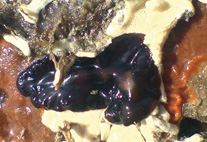Abstract
Phylogenetic relationships of Iranian Acanthodactylus species were investigated using 1407 bp of mitochondrial DNA including 606 bp of cytochrome b and 801 bp of NADH dehydrogenase subunit 4 (ND4). Analyses done with maximum parsimony, maximum-likelihood, and Bayesian inference included 67 specimens from 27 geographically distinct localities in Iran. Our molecular results proposed three clear and geographically isolated clades by their phylogenetic positions and genetic differences. These three major clades are: (1) A. micropholis+ A. grandis+ A. khamirensis; (2) A. blanfordi+ A. schmidti+ Acanthodactylus sp1; (3) A. nilsoni+ A. boskianus + Acanthodactylus sp2. The phylogenetic analyses of the genus did not group A. grandis with the remaining species of the A. boskianus group and clustered it along with A. khamirensis within the A. micropholis group. In addition, phylogenetic results revealed a monophyletic status for A. schmidti and A. micropholis groups. Molecular clock approach indicated that the most recent divergence event splits A. micropholis from A. khamirensis about 2 MYA and results of dispersal-vicariance analyses showed that this diversification occurred by dispersal event rather than vicariance. Results of Reconstruct Ancestral State in Phylogenies (RASP) showed that Most Recent Common Ancestor (MRCA) of A. micropholis, A. blanfordi and A. sp1 originated in eastern Iran. The first diversification of the genus in Iran most likely occurred between 8.5–9 MYA corresponding with the hypothesis that the genus has entered Iran long after the complete uplifting of the Zagros Mts. (10–12 MYA) which limited its dispersal only to the Persian Gulf shores and western slopes of the Zagros Mts.

